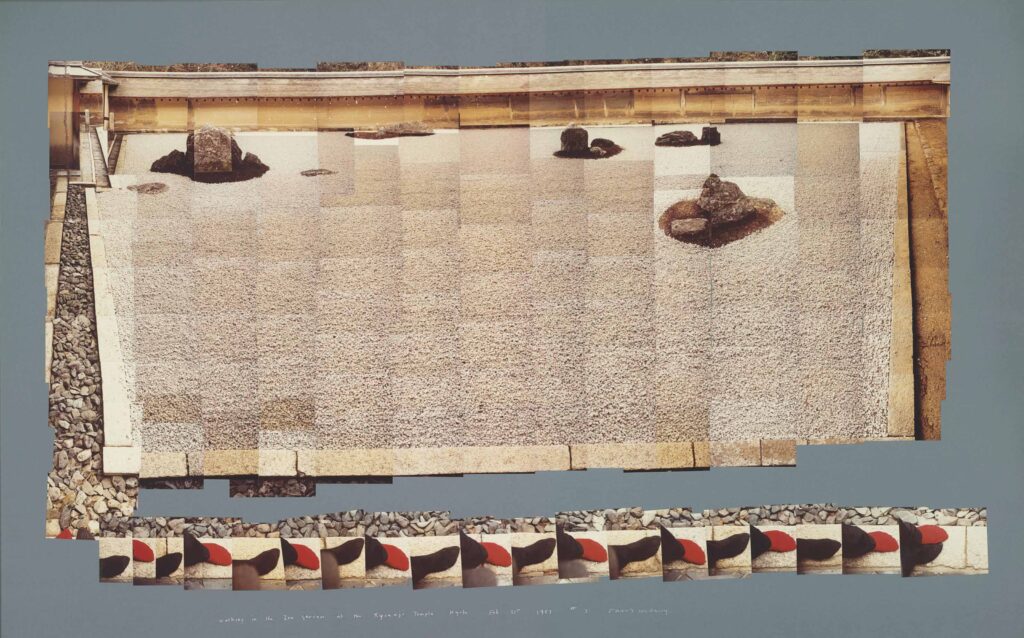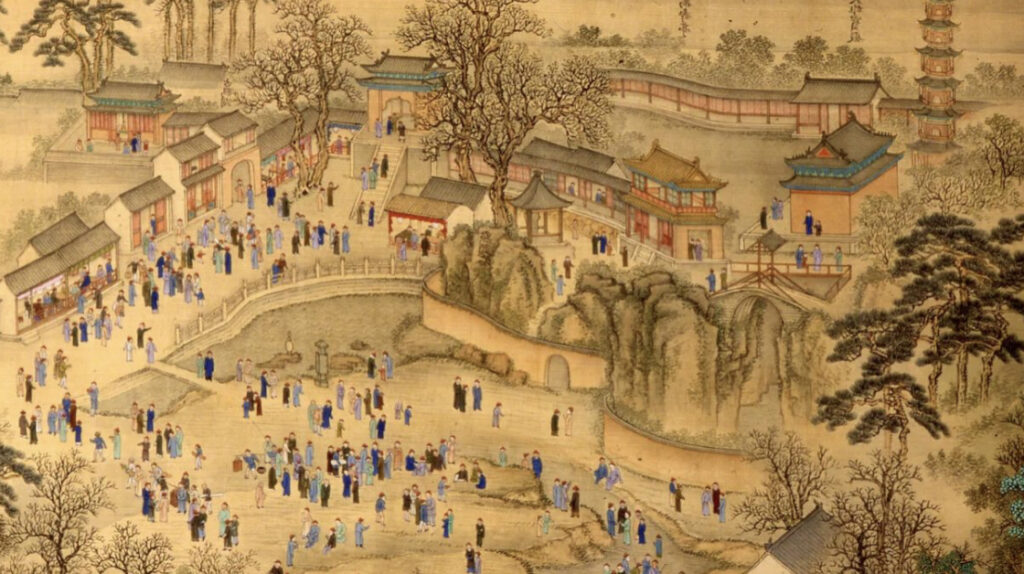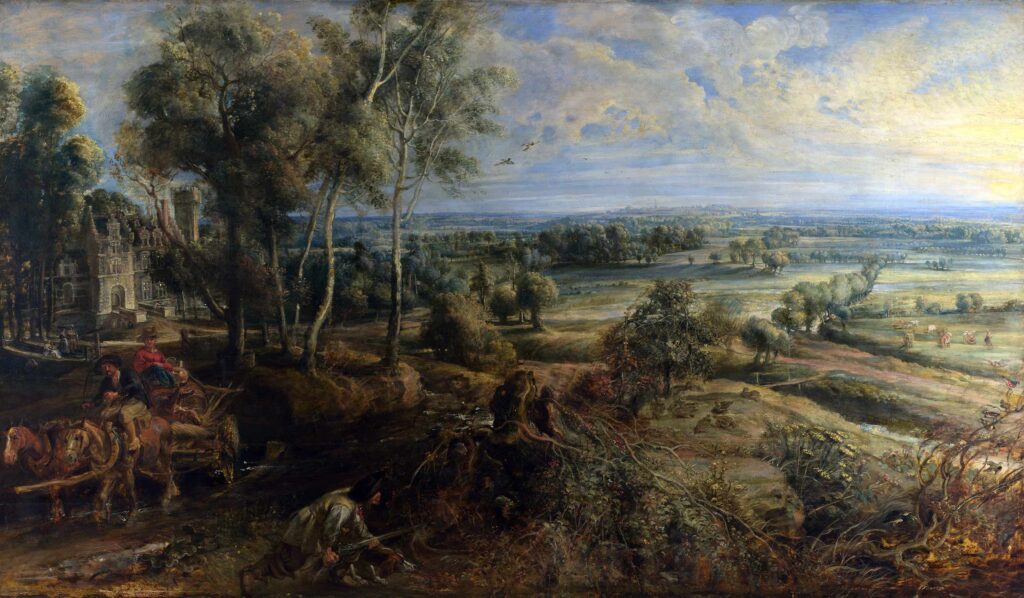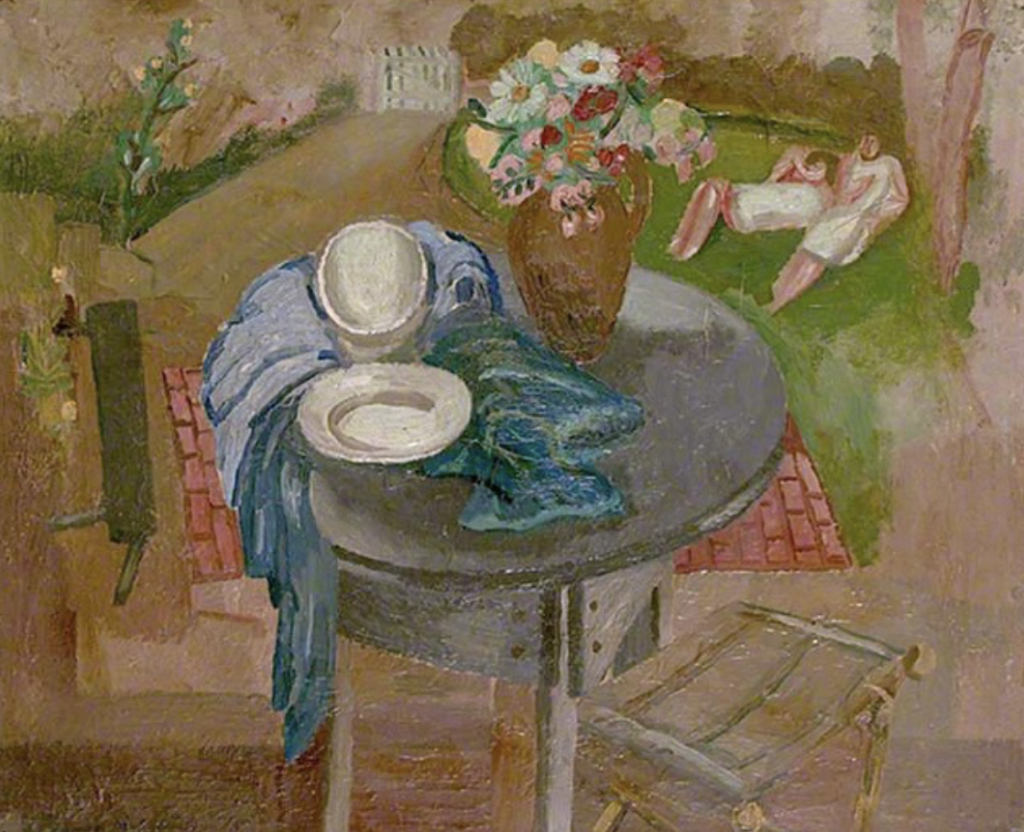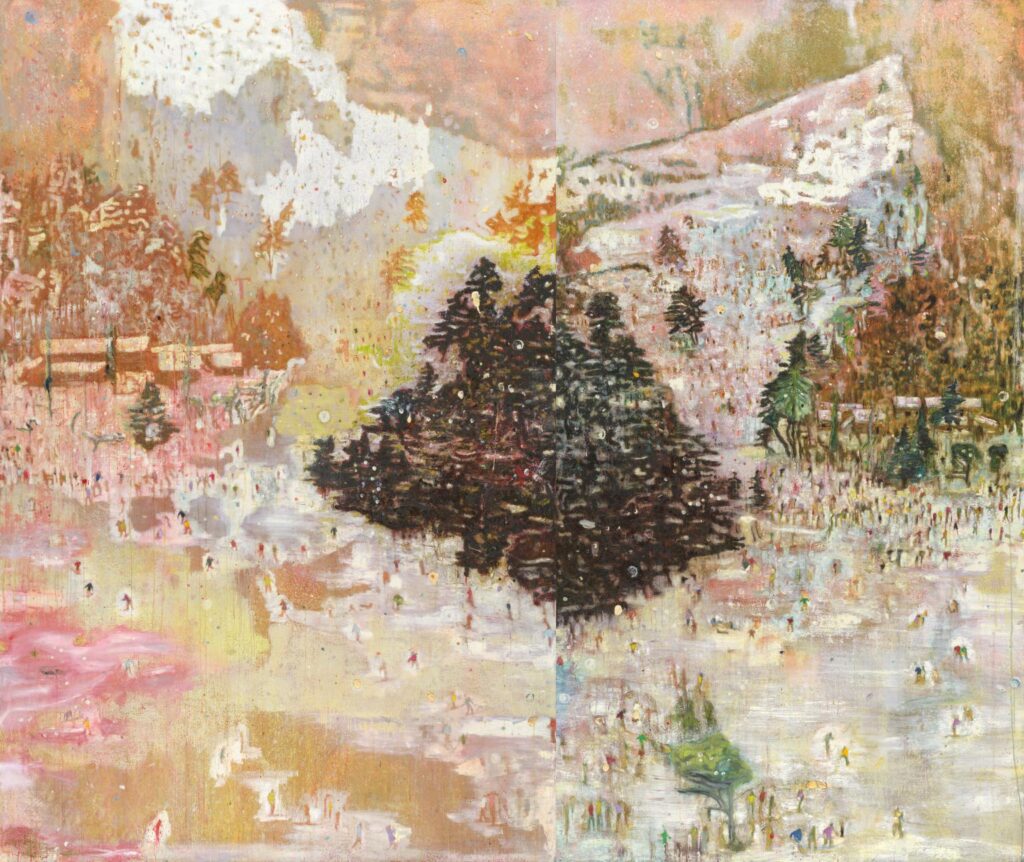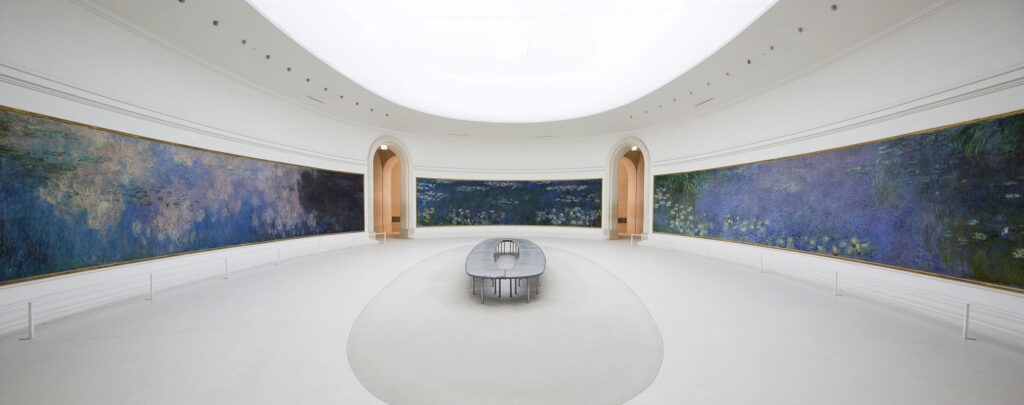
In each of the paintings I’ve selected for you below, the artist has minimised the use of perspective and focal points to give you the viewer, more freedom to explore the whole landscape in front of you.
Before looking at the paintings below, watch at least the first five minutes of this Youtube video where David Hockney explains how he composed his Grand Canyon painting to make sure that there wasn’t a focal point in it; we can turn our heads and explore! In this one hour lecture, he talks about the same concepts in terms of Chinese scroll paintings. If you don’t have an hour spare, watching just a few minutes from the 7 minute mark is still very useful. As the viewer unravels the scroll, they are taken along a journey, and not fixed as we would be in a painting constructed with perspective.
I first started thinking about how some artists to portray space without a focal or vanishing point when I was at art school in the early 90s. Having read about how Picasso and Braque questioned how we perceive space during their Cubist period, I found a slide and cassette audio visual package, with Hockney eloquently talking through a series of images, explaining his problem with perspective and how his ‘Joiner’ experiments (multi shot photo montages) aimed to remove perspective altogether. I’ve searched online for a copy of the slide and cassette package but haven’t been able to find it. If you can find me a copy, I’d be very grateful.
